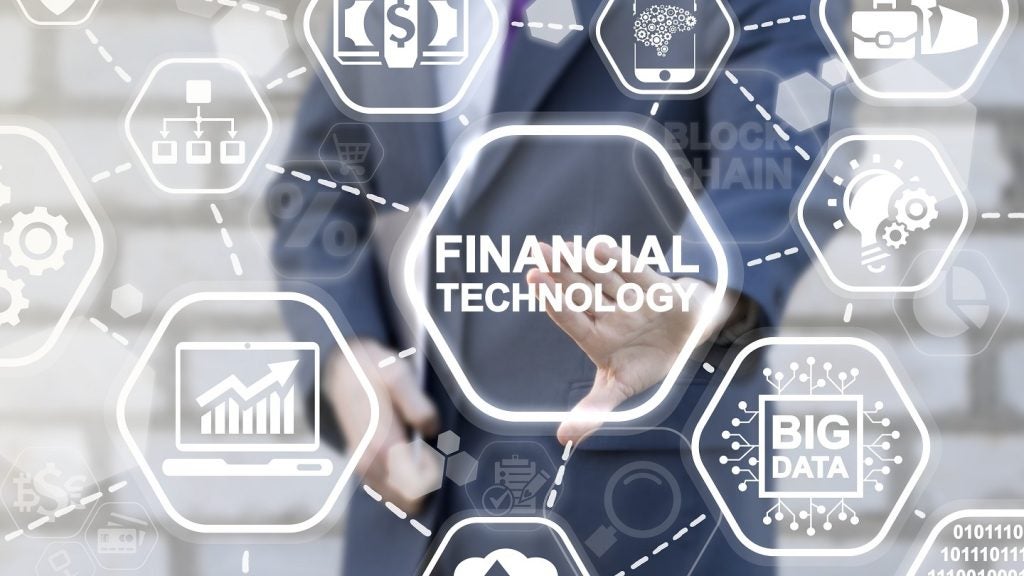Renewables lessors are the
pioneers who are forever seeking to find new ways to finance green
equipment. Vicky Meek reports.

The leasing market in the renewable
energy sector remains patchy at best. While interest levels among
funders are high, the asset class’s heavy reliance on government
policy makes building a long-term business a complicated
affair.
As the cost of oil continues to
soar, with some predicting prices of up to $150 (€120) a barrel by
the summer, together with the fact that reserves are a finite
resource, the need to harness alternative sources of energy is
becoming ever more important.
Over recent times, governments,
faced with the necessity of hitting emissions targets as well as
concerns over national energy security, have sought to stimulate
the generation of renewable energy through various subsidy
packages.
How well do you really know your competitors?
Access the most comprehensive Company Profiles on the market, powered by GlobalData. Save hours of research. Gain competitive edge.

Thank you!
Your download email will arrive shortly
Not ready to buy yet? Download a free sample
We are confident about the unique quality of our Company Profiles. However, we want you to make the most beneficial decision for your business, so we offer a free sample that you can download by submitting the below form
By GlobalDataGiven the importance of renewable
energy to future economic growth and the future environment, it
would be easy to believe that the market for financing new
technologies that generate clean energy from renewable sources is
almost without limit; and that the leasing sector had a big role to
play in funding the new equipment.
Indeed, the International Energy
Agency has predicted that Europe will need to invest more than
$700bn for the European Union to meet its target of reducing
energy-related emissions by 20% between 2010 and 2030.
However, for bigger projects
leasing is not generally used.
“In the UK renewables market we
have not seen anything of note in terms of large assets being
financed through leases,” says Richard Goodman, partner in the
international project and structured finance group at Watson,
Farley & Williams.
“The attractiveness of leasing in
big ticket transactions was substantially reduced by the
introduction of the long funding lease regime.
“We also now have to contend with
historically low interest rates and reduced tax capacity in many
financial institutions. We have discussed the use of operating
leases for some asset classes but the proposed changes in
accounting standards would obviously have an impact on that
approach.”
The UK’s Finance & Leasing
Association (FLA) clearly sees a market for leasing in the drive to
help governments meet their targets and is pushing for a more
attractive environment in which lessors can operate.
Last February, it produced a
report, in conjunction with Delta Energy and Environment, in which
it outlined a number of projects that would be suitable for leasing
finance.
These included small wind and
combined heat and power projects on six-year leases and solar
panels (photovoltaics) on longer leases.
The FLA also called on the
government to extend tax allowances for these projects and devise
some form of risk sharing with lessors, under which the government
would share any shortfall between the actual and expected value at
the end of the lease term in return for a small fee.
Germany leads
The story in other countries is a
little more encouraging in terms of the leasing market.
Germany, for example, has a very
well developed renewable energy industry. In 2005, 10% of
electricity there came from renewable sources and its goal is to
increase that to 20% by 2020.
It receives government support and
has one of the largest feed-in tariff schemes (a means by which
governments guarantee prices paid to renewable energy suppliers) in
the world, worth around $19.5bn in 2009, according to a Bloomberg
New Energy Finance study released last year.
Yet leases are rarely used in
Germany because the government-backed bank, the Kreditanstalt für
Wiederaufbau, has a renewable energy programme that provides cheap
finance for projects both in and outside the country.
“In Germany, it is possible to get
debt at low interest rates to finance projects and so leasing tends
not to be used,” says Michael L’Estrange, partner and head of the
international tax group at Watson, Farley & Williams.
However, L’Estrange adds: “There
may be some activity to come in the form of leases using the KG
model and so the renewable energy market may become an asset class
for that.”
In France, the environment for
leases in the sector has worsened.
L’Estrange says: “In France, the
situation has changed.
“It used to be a very favourable
market for leasing in renewables, but the extraordinary tax
depreciation regime, which applied to some renewable assets, has
not been maintained by the Finance Bill for 2011 and so the
benefits of leasing have been eroded.”
However, at the smaller end of the
spectrum, there is some movement. One of the biggest markets for
leasing in the renewable space is in Italy, and some Central and
Eastern European markets also look promising.
Tax effects
Martin Mayr, head of renewables at
Unicredit, says: “One of the main reasons for differences between
countries is the tax position.
“For example, in Germany, there are
tax hurdles for the use of SPVs, while in Italy such means of
structuring leases can benefit from incentives too.
“This year will see further
developments in PV leases in Italy. There are also new PV markets
in Romania and Slovakia, which are also looking promising for wind
and small hydro, while Turkey will develop mainly wind farms.”
 Unicredit is one of the
Unicredit is one of the
biggest players in these regions and has seen its levels of
business increase markedly.
Mayr says: “Last year, we financed
€900m in renewable energy. This was mostly in PV, which accounted
for €750m mainly in Italy, while €150m went to finance wind parks,
most of which in Austria, Romania, Bulgaria and Turkey.”
These types of deal tend to be
small by comparison with the rest of the energy industry and
consist of small wind parks or PV panels in industrial estates or
on residential properties.
“The size of deals is very
different from conventional energy,” Mayr says. “A PV plant for a
household may cost as little as €15,000 and a small wind park could
be around €10m investment volume.”
And of these, PV is showing most
promise, largely because of improvements in technology.
Mayr explains: “PV is generally
seen as the fastest growing source of energy for the future,
especially as, over the next five years, there will be large
increases in efficiency while costs will reduce.
“This means there is a lot of
potential leasing business to be done in this area as new
businesses will be setting up with the equipment and others will be
looking to replace older, less efficient equipment.”
Policy-led
leasing
In the UK, the smaller end of the
market is being boosted by drives to manage waste more
efficiently.
Local authorities are faced with
the problem of what to do with the waste produced by local
populations and waste to energy is widely seen as part of the
solution.
Some estimates put the number of
waste to energy projects being put out to tender by local
authorities at over 100, so the need for finance is clearly
there.
“A lot of new start or project
companies are being established on the back of government and local
authority initiatives that encourage multiple fuel supplies to
ensure national energy security,” says Simon Corbett, sales manager
at Siemens Financial Services.
“A lot of these are facing
challenges in getting equity and debt, so sometimes they are
looking at leasing or asset finance options.”
“There are a lot of large
corporates looking at waste to energy projects,” adds Andrew
Maskill, partner in the finance division of Addleshaw Goddard.
“They get fees from councils to
take the waste off their hands, they can create heat and
electricity to sell to utilities and, if they are burning the right
waste, they will also get Renewable Obligations Certificates [a
type of currency that renewable energy suppliers can sell to energy
companies to help them meet their targets] or double ROCs to sell
on.
“Many of these projects are being
financed through debt, but you are seeing some leases coming
through or HP agreements.”
The other area he points to as
being active is providing heat and power generators to hospitals
and council buildings.
“There are thousands of buildings
across the UK that were built a long time ago and that have the
original, inefficient generators still in place,” says Maskill.
“We have worked on a lot of
projects to install new heat and power plants to these buildings,
in which the cost of new equipment is offset by more efficient
heating and power supplies. Many funders are very interested in
this.”
There is also business coming
through on the back of a new feed-in tariff regime announced by the
UK government last year. This has spawned a raft of new companies
set up to provide solar panels free of charge to residential
customers on the basis that the business will receive the
guaranteed price for electricity produced over, say, 25 years,
while the customer gains from lower energy costs.
This is an area of high interest
for many leasing companies, says Maskill.
Yet many of these smaller projects
are far from straightforward for funders. The fact that the
viability of so many projects relies heavily on government policy
and subsidy means that there is a high element of risk
involved.
“Government policy and subsidies
drive the renewables market 100%,” says John Sparta, vice-president
of De Lage Landen’s clean technology business.
“This can be problematic because
then you are subject to the fickle nature of government and where
it sets its priorities. Changes in this can have a dramatic effect
on businesses and so we see the need to diversify by country and by
asset type to reduce the risk.”
Mayr explains further: “Government
policy influences markets to differing degrees. The most important
aspect is the feed-in tariffs. Most businesses in renewable are
very dependent on these.
“Wind is very close to grid parity,
but you still need a tight contract – a guaranteed minimum tariff.
Photovoltaics are still very dependent on feed-in tariffs.”
Spain is a clear example of how a
market can change.
Sparta says: “Before the crisis,
Spain was a very attractive market for PV, but then everything
stopped very quickly when the country’s economic situation
worsened.
“Government spending priorities had
to change and so funding subsidies became far less important. The
volatile nature of the market means that you have to be able to be
flexible.
“It is very expensive to enter new
markets to do business and so you need to choose your markets with
care. You need governments with a long-term commitment to policies
and a stable economic environment.”
Unstable pricing
The same issues affect heat and
power projects in the UK, with pricing stability a key stumbling
block.
“One of the challenges many of
these businesses face is that they are too small to attract project
finance in the normal way – they often require debt in the £5m to
£25m range,” says Siemens’ Corbett.
He adds: “Another major hurdle is
that they struggle with their business plans because they can’t get
guaranteed or consistent energy prices through the term.
“Financers often want certainty on
sources of input fuel and feed-in electricity prices and they may
not be able to get this. Many would view this is not an easy
project to lend to.
“As a result, they are having to
look at underwriting the business plan without any real certainty
and will likely be exposed to the project for performance risk.
That is a very expensive thing for a lender to evaluate.”
Yet despite all these issues, many
lessors are finding ways of doing business where they see
opportunity. De Lage Landen believes that partnering with
organisations will ensure that it can build a viable and
sustainable business.
Sparta says: “Globally, there are
many deals, but we want to take a partnership approach with
manufacturers or utilities so that we can systematise our approach
to clean tech leasing business. That is how we believe we will grow
the business rather than doing many individual deals.”
However, other parts of the clean
tech space may well provide a greater source of new business,
particularly over the short to medium term.
Sparta says: “We are focusing on
two main areas. The first is solar and wind energy. But we see a
bigger growth area in energy efficiency.
“If you take a typical office
building or manufacturing plant, it will look first at energy
efficiency because the upfront costs of installing smart
controllers and energy efficient lighting are lower than renewables
technology and so the payback is faster.
“That is important in areas such as
local authorities and schools, where budgets are squeezed. Once
this has been done, some may then look at renewable energy
sources.”
It is clear that demand for finance
in the renewables and clean tech space is growing fast. But it’s
not yet clear how large a role the leasing industry will have,
unless governments are able to provide a more attractive market in
which lessors can operate.
Many are calling for greater
support and stability both from the government and in terms of
market innovation.
“We are very busy in this space and a debate on risk-sharing,
specific legislation for this market or project security would be
an interesting one for us to have,” says Corbett.
See also:
Expert Eye: Political backing drive
renewables interest







